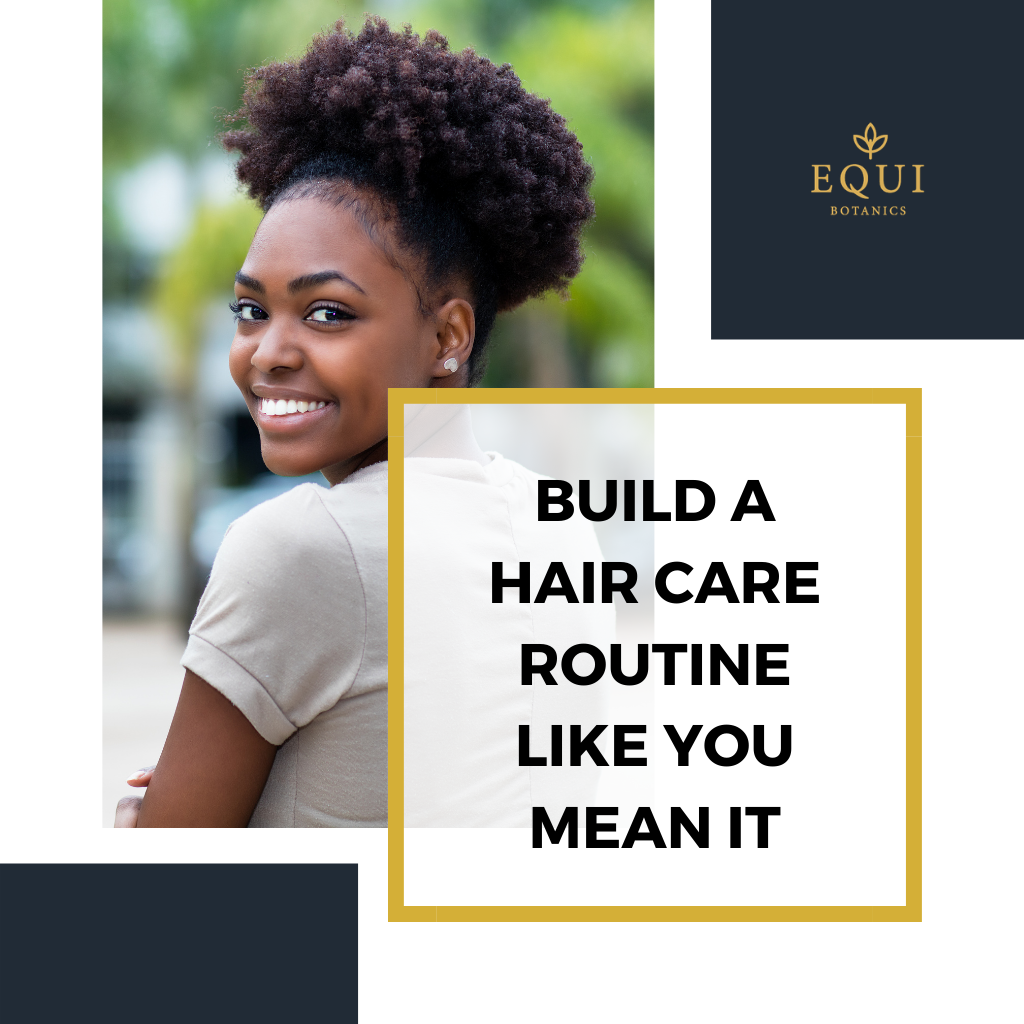
You may want to have healthy natural hair but you don’t know where to start. You may have even cut off all your permed bits but feel that the rest is hard to manage. Your hair may need some encouragement for maintenance and growth. The natural hair terminology can sound confusing at times.
There are five main areas of looking after your natural hair and a haircare routine or regimen should help you on your way. These are our ideal haircare routines for the girls and I but sometimes life takes over and that’s fine. It’s an ideal regimen that could help you decide what works best for you. There are no boundaries but sticking to a routine will yield predictable results such as more elastic healthy hair, less split ends, less breakage and thicker, shinier fuller hair.
Detangling
This is easily the most important aspect of retaining your hair growth. Detangling is best done before cleansing, at least once a fortnight. Once I was very ill for a month and went without detangling. When I finally got round to it, the detangling process took longer as there were much more shed hair to contend with. Afro textured kinks and coils have the tendency to cling onto one another, leading to tangles. Detangling helps stop these tangles from turning into knots that lead to breakage. Detangle when hair is moist with product such as heavy oils or conditioner. Work your way in sections and clip aside what you’re not working on, while focusing on what you are. If there are tangles, start from the ends of the hair, apply lots of conditioner and stretch coils away from each other. With time, the tangles should come loose and you may find some shed hair that was entangled with stable hair.
Cleansing or Co-washing
Cleansing your hair is best done once a week as well to remove product buildup, dust and refresh hair. After detangling, part your hair into sections and wash each section one at a time. If your hair is long enough, twist the sections loosely so your fingers can massage the scalp thoroughly. If you can’t twist, I've made a video on how I do it here. If your hair is short, try using duck bill clamps to section. Massage the hair shaft from root to ends as this smooths down the cuticles while you rinse with lukewarm or cold water. Cold water further encourages the hair strands to lie flat. Use a no-sulphate moisturising shampoo to avoid the drying effect of some shampoos. People ask me why their natural hair is so tough and difficult to manage; shampooing with harsh chemical is one of the chief reasons. Some naturals cleanse with a conditioner, called co-washing. This can be cleansing, depending on the ingredients and can be done for a few weeks in a row, followed by a through shampoo cleansing the next week.
Deep conditioning
After you’ve gently dried your hair with a cotton cloth in a downward motion, use a deeply penetrating deep conditioner weekly or at least twice a month. In the past, I made the mistake of using a leave-in conditioner as a deep conditioning treatment. The gaps in your hair strands from over-manipulation, heat damage and weather elements cannot be closed effectively with a leave-in conditioner. Use a deep conditioner with hydrolysed vegetable protein as these have molecules that close those gaps and give a smooth finish to your strands. Massage the deep conditioner into the hair strands and either use body heat or a steamer for about twenty minutes to forty minutes. (Read more here). Most weeks, I leave my deep conditioner overnight and rinse out the next morning. There are no toxic chemicals in it and there are only natural ingredients.
Moisturising and oiling
These terms can be interchanged wrongly. Moisturising is the use of water or water based conditioner to apply to hair while oiling is the use of oil or oil based products to seal in the moisture or protect the ends from the weather elements. After you have rinsed out your deep conditioner, apply the water-based leave-in conditioner, massaging into the hair shaft and smoothing down. To be honest, because my deep conditioner is so natural, I usually don’t rinse so thoroughly.
Styling and plaiting
A hair coach advised me to switch up my styles to avoid pulling on the scalp in the same way constantly. Sage advice, if I ever heard one. Because I do my own hair, I find that I’m not able to reach everywhere with the same light pressure. I’ve now learnt by practising. It’s always easier when you’re doing someone else’s hair, such as when I do the girls’. Try styling your hair less frequently so as not to over-manipulate it. This will help retain the smoothness of your styles, avoid pressure and limit raising the cuticles. You can use a light oil to seal in the leave-in conditioner while styling. With short hair, you may feel that over-manipulating can't be helped. Try to style it in wash-and-gos (my favourite for short hair), twist-outs or coils which will keep for a few days's at a time.
My next post will cover how to keep your hair protected during the night and daily. Sign up to catch it first.
Hope this helps.
Let me know what questions you have on Instagram @equibotanics


